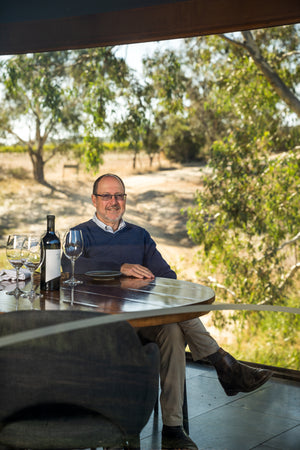Hentley Farm was established in 1997 by Keith and Alison Hentschke, who had a single vision to craft exceptional single estate wines from the Barossa Valley.
Prior to this, Keith acquired impressive credentials studying Agricultural Science and Wine Marketing at Roseworthy College, where he graduated with the prestigious Gramp Hardy Smith Memorial Prize for the college’s most outstanding student, and garnered extensive experience working in the wine industry.
He made good use of these years, searching for the perfect site and consulting with local winemakers and viticulturalists, who told him to ‘Head north west (Barossa) and look for the red/brown soil over limestone’.
Using an old soil map from the 1950’s to strategically locate the best parcels of land, they discovered a mixed farming property set among the rolling hills on the banks of Greenock Creek in Barossa’s west, with remarkable diversity of soil types, and varying aspects and altitudes.
In 2004, the estate was extended with the purchase of a neighbouring vineyard which shared the treasured natural amphitheatre of rolling hills that surround Hentley Farm and resultant diversity of site. This single estate of 150 acres is Hentley Farm.

Meticulous Planning
Keith’s experience and expertise as an agricultural scientist drove him to explore and understand the land before planting could begin.
He soon discovered that the altitude differential and east west aspect variation created surprising micro climates, and in collaboration with local viticulturalists, he set about exploring the diversity of soil on the site by digging forty soil pits around the property.
The extreme diversity of soil, aspect, and altitude across the property provided both an opportunity and a challenge which required meticulous planning for the layout of the vineyards. Specifically regarding; varietal selection, clone selection, row spacing, orientation, the type of trellising used, and water management.
Through this process Keith and his team created ‘viticultural blocks’; dividing the single vineyard in to nine blocks based on similar soil type, aspect and climate. Each block was then further divided into a collection of rows, depending on changes in the soil, aspect and micro-climates. The blocks were planted to Shiraz (70%), Grenache (17%), Cabernet Sauvignon (10%), Zinfandel (2%), and a small parcel of Viognier (0.5%). The first wines were released from the property in 2002.





